Botswana’s theatrical stand of baobabs in Nxai Pan National Park is a must-visit. But which season is best for capturing Baines’ Baobabs? Photographer Melanie van Zyl explains where to stay and when to visit.
After deflating our tyres at the entrance to Nxai Pan National Park, we had to maintain momentum to beat the deep sand tracks and corrugations on the road that wound to Baines’ Baobabs. The golden grass of June soared up either side of the Toyota Landcruiser and obscured most of the plains. We didn’t count on seeing much wildlife. On this first visit to the trees, we were so focused on getting to our destination that we almost missed the pack of African wild dogs that unexpectedly appeared on the middelmannetjie.
The dogs paced down the road, their Mickey Mouse ears bobbing between the grass as we crept behind them until they evaporated as magically as they had emerged. It felt like a blessing on our pilgrimage. We saw no other vehicle until we reached the famous landmark where seven giant baobabs stand above the arid plain, just as they have for centuries.
You can visit the baobabs on a day trip from Gweta or even Maun, and it takes roughly an hour’s drive from the Nxai Pan gate. However, photographers and wildlife lovers will want to spend at least one night in this underrated national park.
Watched over by baobabs
After wandering through the ancient forest, we drove a ruler-line kilometre across the dry Kudiakam Pan to campsite number one and pitched a tent below another impressive baobab. Its winter branches seemed to clutch at the diamond-studded sky that night. We had to bring all supplies, including firewood, food and water. Our nearest neighbours lay their heads another kilometre away at campsite number two. The third and final stand lay empty that night. I could not believe we had this remarkable place to ourselves.
The following day at dawn, I walked back across the white expanse to photograph Baines’ Baobabs with the rising sun while my parents slept in. The pan had dried into a mosaic, each cracked tile of mud peeled up at the edges and I got low, laying down on the ground to try to capture the trees against the blushing sky.
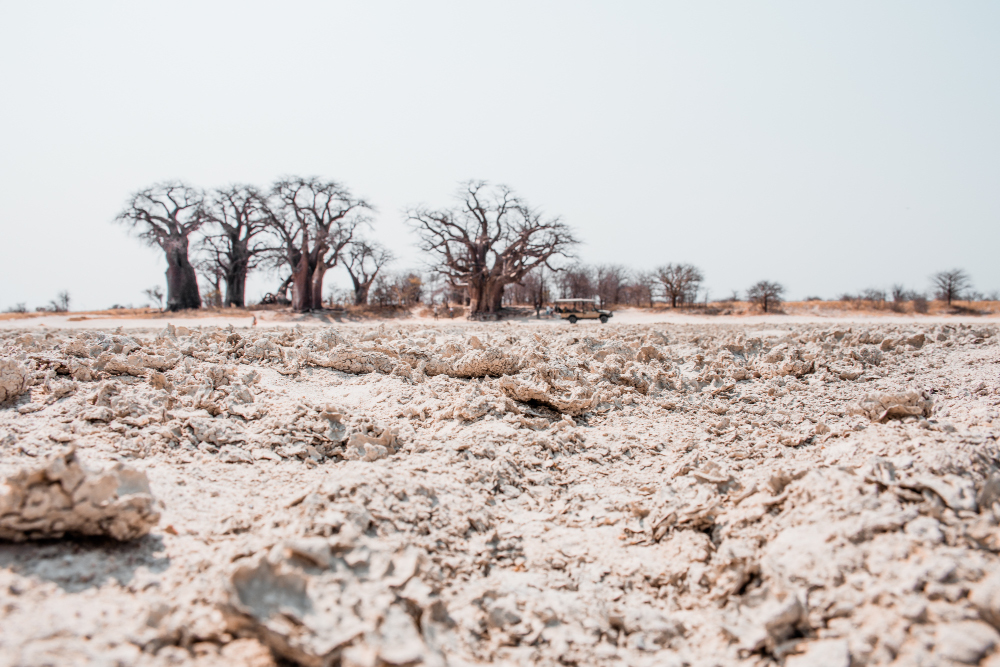
The changing faces of Nxai Pan
I ventured deeper into Nxai Pan National Park on my second trip and saw an entirely different face of the Makgadikgadi Salt Pans during the rainy season. This Kalahari terrain transforms from golden plains to a verdant paradise that entices herbivores from hundreds of kilometres away. It also creates a quagmire in front of Baines’ Baobabs and the salt pans become a slippery puddle.
It’s well worth venturing north of Baines’ Baobabs to witness the wildlife conglomerations in both summer and winter. This little park delivers fantastic sightings with a bit of the photographer’s patience. Predators prowl the permanent waterholes in the dry season between June and October, and elephants shower themselves in water and ivory dust. Home to a unique mix of savannah and desert species, Nxai Pan hosts enormous summer migrating herds of plains zebra, blue wildebeest and springbok between December and April.
Also read: A self-drive guide to Nxai Pan National Park
Tips for photographing Baines’ Baobabs
These baobabs must be some of the oldest in the world, at least 1000 years. Baobabs across Southern Africa are collapsing, and many scientists attribute their demise to climate change. Researchers found nine of the oldest 13 baobab trees and five of the six biggest ones have partially or completely died since 2005. These include Limpopo’s Sunland Baobab and Chapman’s Baobab south of Nxai Pan National Park. When photographing Baines’ Baobabs, it is vital to be respectful towards this ancient forest. Note that drones are strictly prohibited inside Botswana’s national parks.
Scale and setting
Baobab trees are ample and enormous. Include a familiar reference point, such as a person or car, to illustrate their scale. By comparing common objects in the scene, the overall setting becomes clearer.
Pro tip: Get low and use a wide-angle lens to capture as much of the trees as possible.
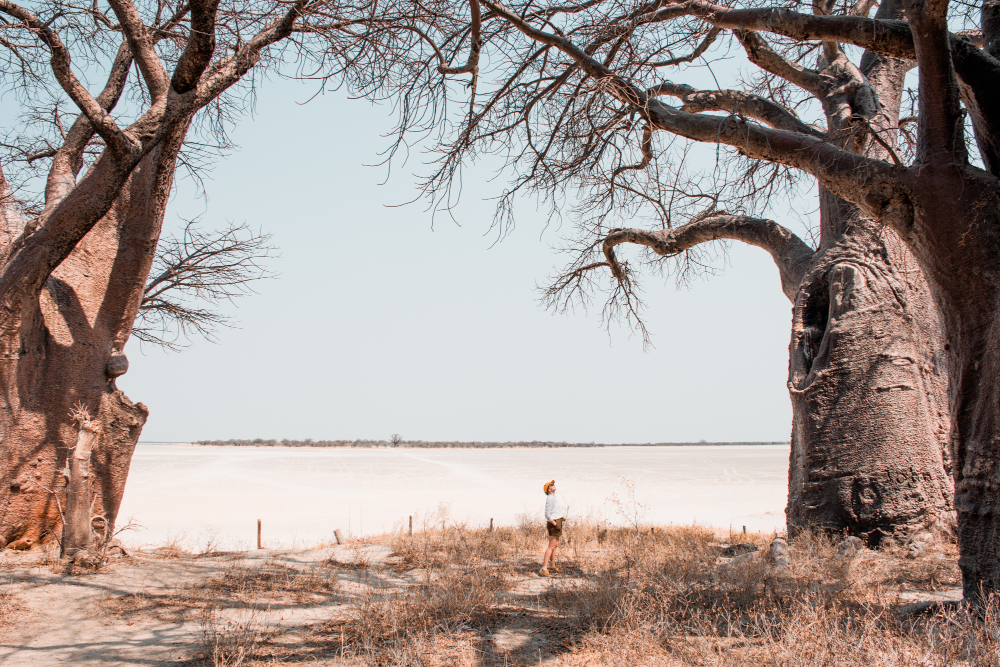
Micro details
The Latin name for Southern Africa’s baobabs is Adansonia digitata. The second part refers to the fingerlike foliage that unfurls from the tips of its scraggly branches in summer. Each frond bears five leaves; in summer, these can be used to frame your image.
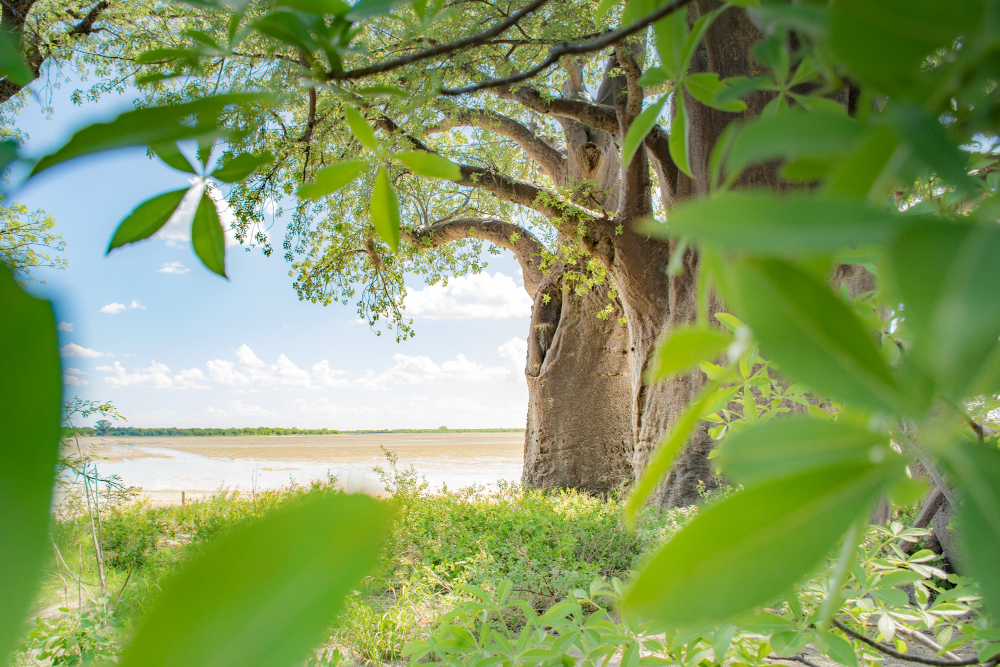
Pro tip: Over-expose the sky to get a better, brighter outline of the leaves.
Green season
Shallow pans around Baines’ Baobabs brim with water after the rains. The route to these trees will vary depending on the downpours. Note this could lengthen your travel time because there are few mud-free routes across the salt pans.
December to April brings lush landscapes and beautiful wildflowers to the otherwise khaki scenery. It’s a glorious juncture for photography with epic thunderstorms and dramatic cloud cover that colours the skies for sunset and sunrise. It’s also a great time to pursue the zebra migration further inland towards South Camp. The longest mammal migration in Southern Africa is a challenging phenomenon to capture, but the baby animals and booming birdlife provide plenty of camera fodder.
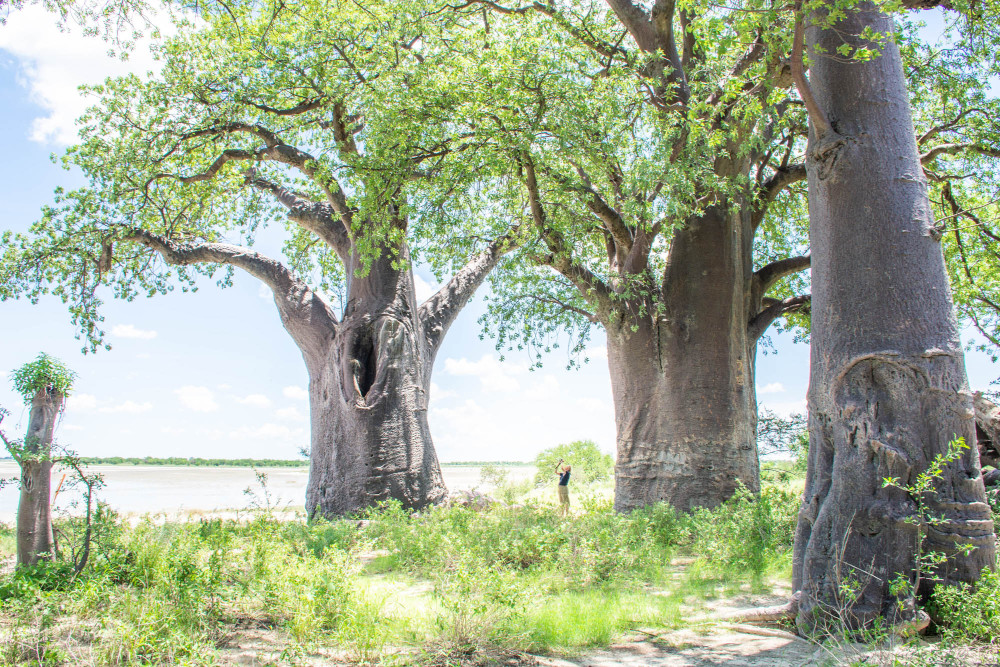
Milky Way magic
The clear dark skies at Baines’ Baobabs allow an unprecedented opportunity to practice your astrophotography. Pack a tripod and use the baobabs in your campsite as a foreground subject to depict the stars.
Pro tip: For night scenes, choose an aperture of f/2.8 or lower, a shutter speed of roughly 20 seconds and an ISO of 3200 as a good starting point. Use your camera’s built-in self-timer to prevent camera shake.
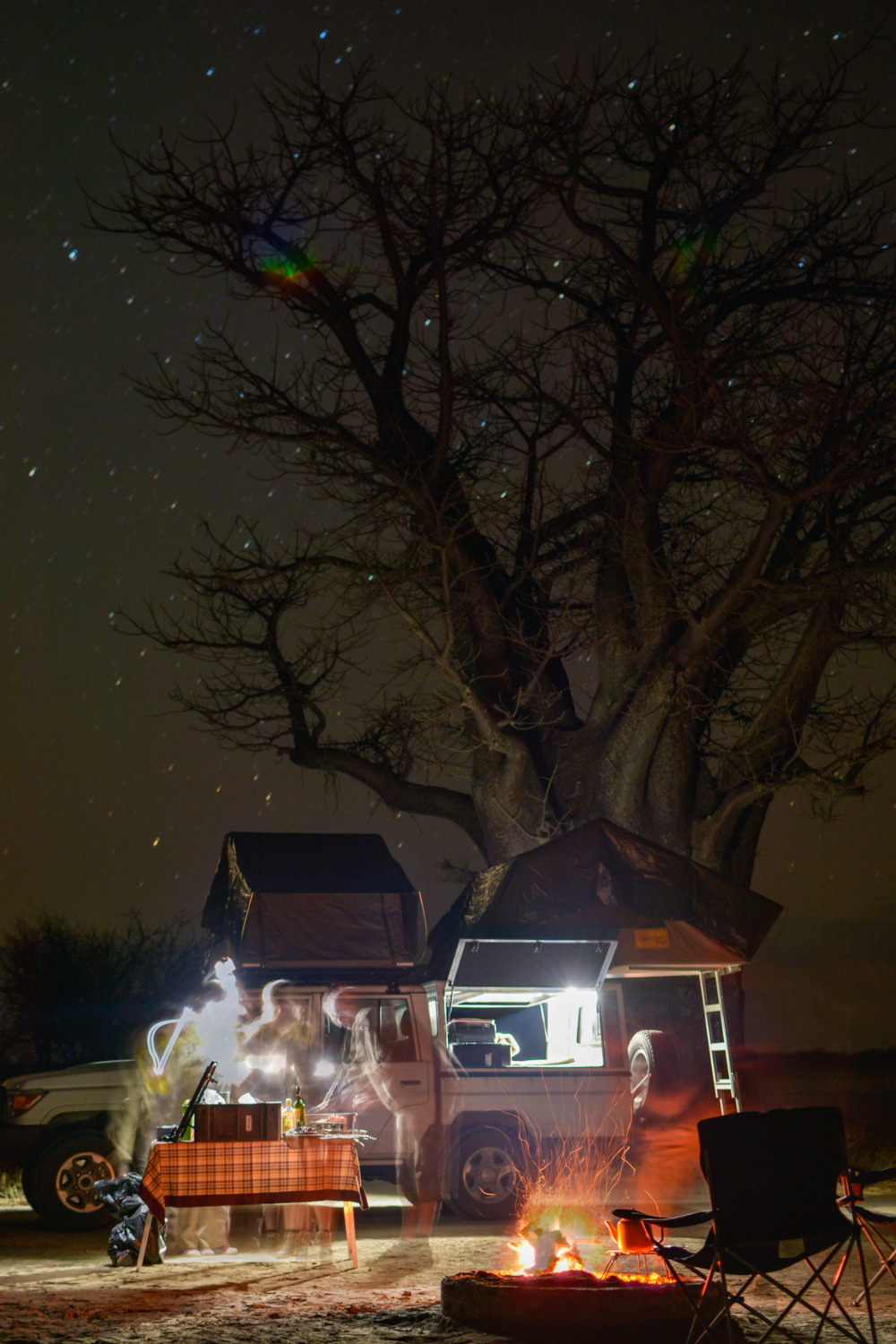
Golden hour
A small watercolour painting by Thomas Baines immortalised this heritage site. Showing a cluster of enormous baobabs against a purple sunset sky, it is a classic image. Golden hour remains the best time of day to visit because day-trippers can inundate the area. Relax at your campsite and wait until everyone departs to get your unobstructed shot.
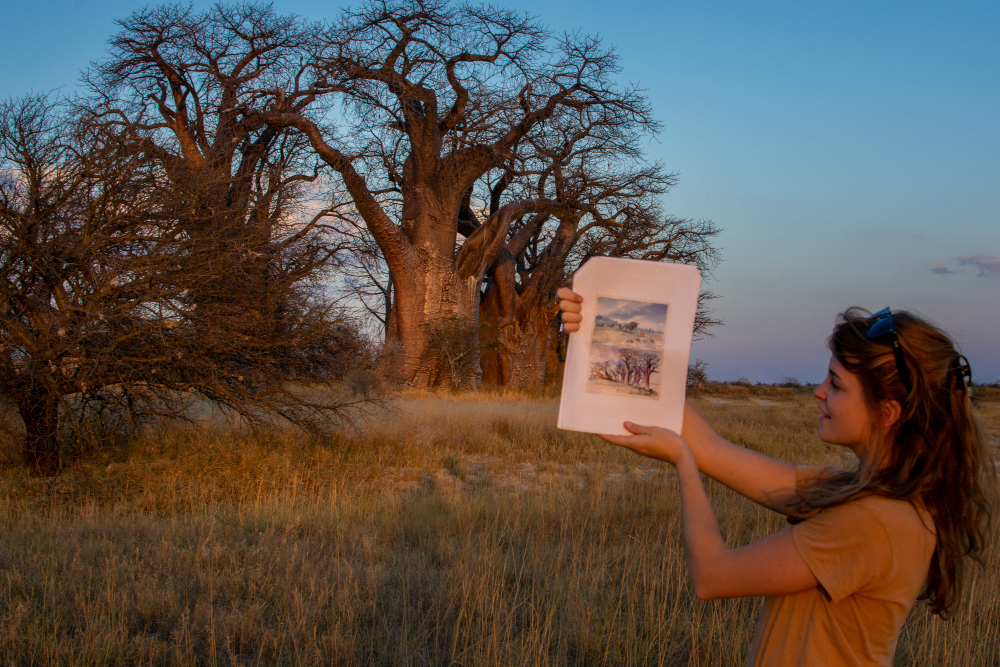
Desert life
The Makgadikgadi Salt Pans are so enthralling because the terrain drastically contrasts from wet to dry. One of my favourite images is of a gemsbok wading through the waters of Kudiakam Pan, which sits in front of Baines’ Baobabs.
Pro tip: Try to understand what makes this place unique. Think about three elements that make this landscape stand out and look out for photographs that capture the essence of Nxai Pan as an area.
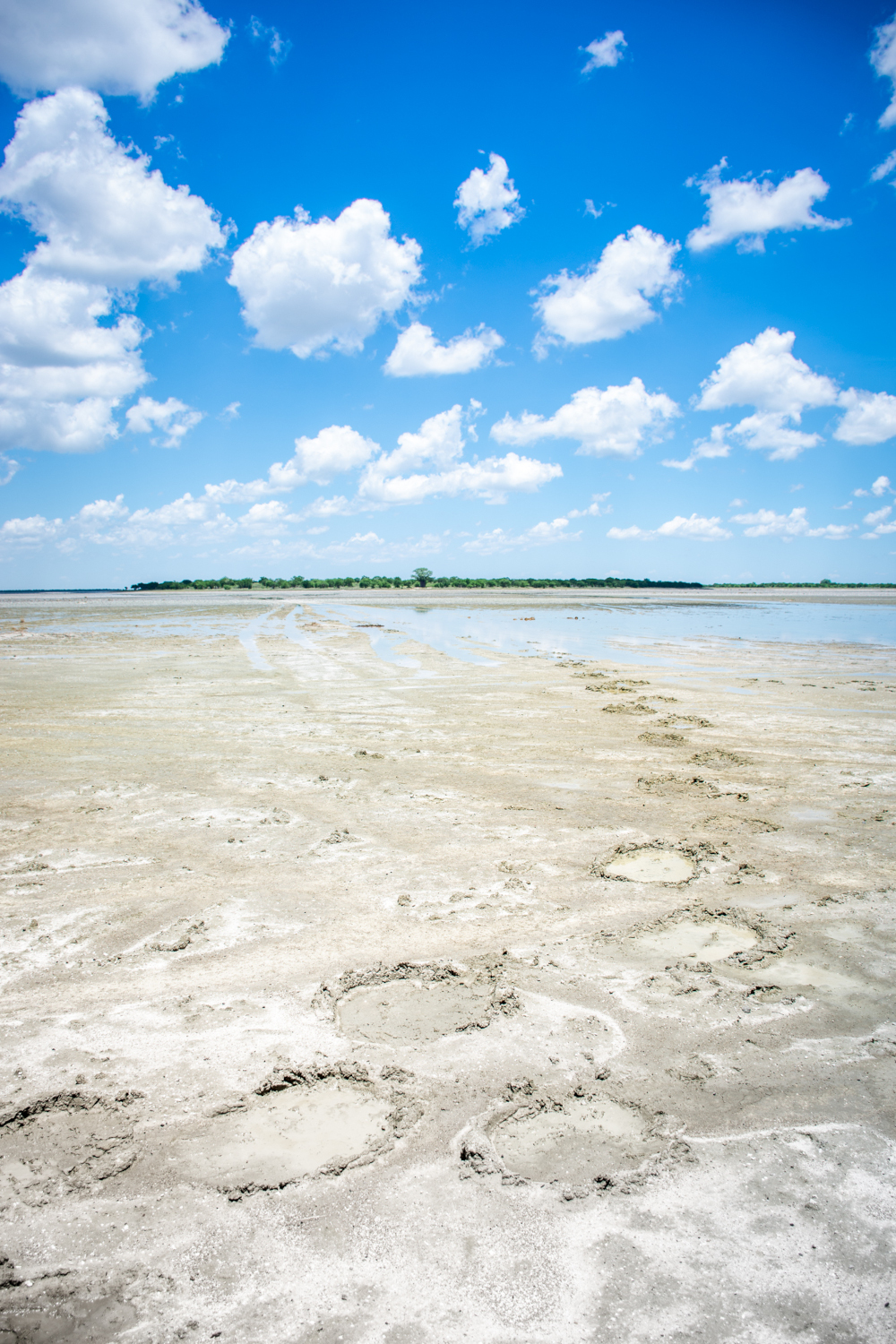
Over to you
If you’ve visited Baines’ Baobabs, we’d love to see your photos. Send pictures to newsletter@tracks4africa.co.za for a chance to be featured in the Tracks4Africa newsletter.
Where to stay
Baines’ Baobabs campsites
Camping at the trees themselves is not permitted, but nearby baobabs provide shade for three sites operated by Xomae Group. The sites are spread about a kilometre apart. Campsite 1 is closest to the landmark (about 800m) and has excellent views of the trees across the pan. Facilities include a pit latrine and bucket shower cubical, but you must bring in water and firewood. Each site can host a maximum of three vehicles and 12 guests per stand.
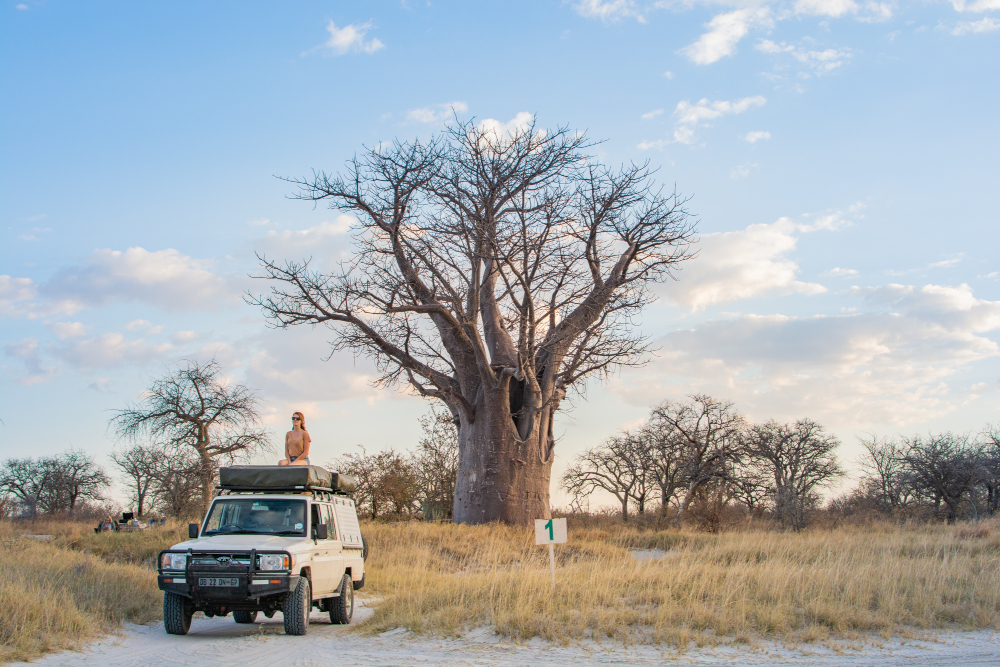
Also read: Camping at Baines’ Baobabs
Camping per day for SADC residents:
- Adults: USD30
- Kids (8-17 years): USD15
- Kids (0-7 years): Free
Contact: +267 686 2221, xomaesites@btcmail.co.bw, www.xomaesites.com
Kwando Safaris Nxai Pan Camp
Nine environmentally considered chalets overlook a waterhole frequented by streams of elephants in the dry season. The lodge provides an all-inclusive stay and offers guided day trips to Baines’ Baobabs. Expect homely meals, stargazing sessions and daily game drives.
Contact: +2676861449, info@kwando.co.bw, www.kwando.co.bw
Conservation fees
The Botswana Department of Wildlife and National Parks charges the following fees per day for SADC residents:
- Adults: P190
- Per vehicle: P75
Need help finding your way around Botswana? Already in its fourth edition, our Botswana Traveller’s Paper Map is the largest available map of the country. Showing distances, travel times and points of interest, it is the perfect trip planning tool. It is designed to be used in conjunction with our GPS Map of Botswana.
If you’re the kind of traveller that enjoys spontaneous explorations, check out our Guide App. It uses your devices’s GPS receiver to pinpoint your location and show you the surrounds. Use it as you travel to discover what’s in the area. The app provides detailed guide information to the location and points of interest.

